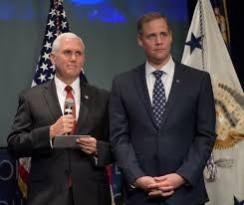NASA chief Jim Bridenstine has officially stepped down from his role as the administrator of the US space agency, as Joe Biden takes the president's office. President Biden is expected to pick a woman to fill the NASA administrator role, which has only been occupied by men since the agency's founding in 1958.
A Trump appointee and a Republican himself, Bridenstine, spent his final days as administrator making last push for the ambitious Artemis programme, that will land the first woman and next man on the lunar surface by 2024.

"It has been my great honour to serve as your @NASA Administrator. I will miss the amazing NASA family and will forever be grateful for my time at this incredible agency. Ad astra," Bridenstine said in a tweet on Wednesday.
"We have done everything we can to build the consensus necessary for this program to be long-term sustainable," Bridenstine told The Verge. "I think as hard as we've worked to build the consensus over the last three years, I think we're in good shape."
Of the $3.3 billion NASA said it needed for next year's budget to stay on track for 2024, Congress came up with $850 million. The $850 million budget marks the first time Congress agreed to fund a human lunar lander since the Apollo programme.
"With that I say farewell. And I'll tell ya, when a new team comes in, give them all your support. Because they need it, they deserve it, and of course what we're trying to do, we're not only crossing multiple administrations, but multi-decade and multigenerational," Bridenstine said.
NASA's new Space Launch System
Last week, a key rocket test for NASA's much-delayed Space Launch System (SLS) ended in an early shutdown as four rocket engines fired for a little over a minute, while these were supposed to be up for nearly eight minutes.
The SLS is set to play a key role in the agency's Artemis programme which aims to return astronauts to the Moon. NASA's Artemis I mission is an uncrewed flight test that will launch Orion on the agency's Space Launch System rocket to orbit the Moon and return to Earth.
On Artemis II, Orion will carry a crew of astronauts around the Moon and back, and Artemis III will land the first woman and next man on the lunar surface by 2024. Subsequent missions will explore more of the Moon and test the technologies and procedures needed for human exploration of Mars.

















